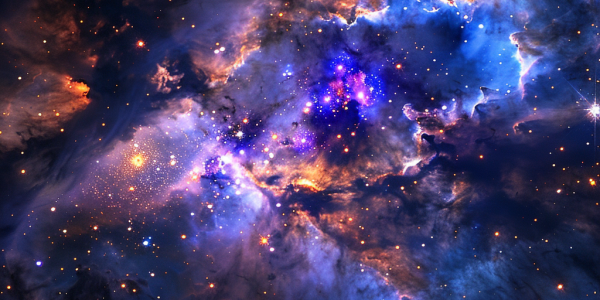James Webb Space Telescope Captures Stunning Details of Crab Nebula
The iconic Crab Nebula has been captured in exquisite detail by the powerful James Webb Space Telescope, revealing intricate cage-like formations formed by dust grains. This latest mosaic offers a fresh perspective on the enigmatic supernova remnant, providing valuable insights into its origins. Stay tuned for more updates on this captivating celestial object as astronomers continue to unravel its mysteries.
James Webb and Chandra Telescopes Spot ‘Lighthouse’ Pointed at Earth
Discover how the James Webb Space Telescope and the Chandra X-ray Observatory have combined data to reveal changes in the Crab Nebula’s neutron star, located 6,500 light-years away in the constellation Taurus. Learn how the neutron star, resembling a ‘lighthouse,’ is emitting radiation and producing a shockwave as it rotates 30 times per second.
Atmosphere Discovered on Rocky Exoplanet 55 Cancri e
Recent breakthroughs in astronomy have unveiled a fascinating discovery – an atmosphere surrounding a rocky exoplanet, 55 Cancri e, shedding light on the intricate interplay between its molten surface and evolving atmosphere. Utilizing the James Webb Space Telescope, scientists identified a thick atmosphere possibly containing carbon monoxide and carbon dioxide, offering valuable insights into the planet’s composition and behavior. This groundbreaking research expands our understanding of exoplanets and planetary atmospheres, paving the way for further exploration of the vast universe beyond our solar system.
JWST Unveils Tumultuous Weather Patterns on Exoplanet WASP-43b
The James Webb Space Telescope (JWST) unveils the tumultuous weather patterns of the distant exoplanet WASP-43b, a sizzling hot Jupiter located 261 light-years away. With relentless supersonic winds and a scorching inferno, WASP-43b’s unique attributes make it an ideal candidate for JWST’s keen observations. Leveraging its potent infrared capabilities, the telescope maps the planet’s atmospheric composition and structure with unprecedented clarity, shedding light on nightside clouds and chemical imbalances on this fiery exoplanet.
New Insights into the Horsehead Nebula Revealed by James Webb Space Telescope
The iconic Horsehead Nebula, also known as Barnard 33, has been captured in unprecedented detail by the NASA/ESA/CSA James Webb Space Telescope, revealing the stunning beauty and complexity of this celestial object. Situated in the constellation Orion, roughly 1300 light-years away, the Horsehead Nebula is a well-known photon-dominated region (PDR) formed from a collapsing interstellar cloud of material. With the sharpest infrared images to date, the Webb telescope has provided new insights into the physical structures and evolution of interstellar matter, offering valuable information on the intricate processes shaping our cosmic neighborhood.
James Webb Space Telescope Captures Southern Ring Nebula in 3D
Discover the mesmerizing beauty of the Southern Ring Nebula, captured in 3D by the James Webb Space Telescope. Learn how aging stars transform into stunning planetary nebulae, and uncover the latest findings from researchers at the Rochester Institute of Technology using the Submillimeter Array (SMA) alongside the JWST. Explore the intricate structure of NGC 3132, offering new insights into the dynamics of planetary nebulae.
Scientists on the Brink of Discovering Signs of Life on Another Planet
Exciting news in space exploration as scientists may be on the brink of discovering signs of life on another planet. The James Webb Space Telescope is gearing up to investigate a distant solar system after potential indicators were detected on a planet. Researchers have identified a gas in the atmosphere that could only be generated by living organisms, sparking excitement among scientists. Stay tuned for updates as the exploration of the cosmos continues.
James Webb Space Telescope Reveals Mesmerizing Image of Tumultuous Area in Space
The James Webb Space Telescope unveils a mesmerizing image of a tumultuous area near the center of our galaxy, 25,000 light years away. This image showcases never-before-seen features that have left astronomers puzzled. Launched in 2021, the telescope’s advanced capabilities allow it to observe the near-infrared spectrum, capturing objects previously undetectable by the Hubble Space Telescope. The recent image focuses on Sagittarius C, a region densely populated with stars and proto-stars, including a colossal proto-star exceeding 30 times the mass of our sun. Astronomers aim to test star formation theories and understand the composition of the universe. The image reveals enigmatic phenomena, such as a blue cloud of ionized hydrogen, sparking excitement among astronomers as they uncover the mysteries of space.
Astronomer to Use James Webb Telescope to Study Saturn’s Northern Lights
University of Reading astronomer Dr. James O’Donoghue is set to use the James Webb Telescope to study Saturn’s northern lights, with plans to also observe Uranus. The research aims to unravel the mysteries behind the planets’ auroras and potentially provide insights into their rotation periods. The project, selected from a pool of 1,931 submissions, holds the promise of unveiling groundbreaking insights into the celestial phenomena of Saturn and Uranus.
James Webb Space Telescope Discovers Little Red Dots in Early Universe
The James Webb Space Telescope (JWST) has made significant discoveries in its first year, including capturing sharp views of celestial structures and obtaining transmission spectra from exoplanet atmospheres. Unexpected little red dots observed in a specific region of the night sky are believed to be galactic nuclei containing precursors of Supermassive Black Holes (SMBHs) that existed during the early Universe. This discovery could revolutionize our understanding of the formation of the first SMBHs in the Universe.










